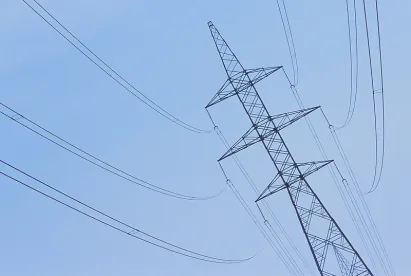President Barack Obama’s vow to generate 80 percent of U.S. electricity from “clean energy” sources by 2035 faces some big hurdles – reliance on unproven technology and energy sources that may not be as clean as advertised.
Add to that another vital consideration: It is unclear whether the nation’s power grid can remain reliable as more electricity is generated by solar panels, wind turbines, and other non-traditional sources whose output is more variable than traditional coal- or natural gas-fired electricity plants.
A team of experts reporting to the chief U.S. regulator of the grid recently found that the power system could handle anticipated increases in wind power through 2012. But beyond that is an open question. “Careful study, planning, and deliberate actions will be required by each interconnection to ensure the continued reliability of the U.S. electric power system,” the experts concluded in their report to the Federal Energy Regulatory Commission, or FERC.
Many renewable energy sources are variable – the wind doesn’t always blow, for instance, and the sun doesn’t always shine. Integrating this less predictable flow of energy into the grid could affect its reliability, notes the report.
Only about 11 percent of U.S. power is now generated by sources other than coal, natural gas and nuclear, according to the U.S. Energy Information Administration. Most of that electricity cannot be stored by the operator and must be plugged into the grid or lost.
In his State of the Union address last week, Obama called for boosting electricity generation from clean energy sources – including nuclear, natural gas, and so-called “clean coal” – as a way to help the United States become more competitive. He followed up this week by meeting with Democrat Jeff Bingaman, chairman of the Senate Energy and Natural Resources Committee, to discuss how to win bipartisan support for a clean energy standard.
The FERC study, while couched in technical language, could have down-to-earth implications not just for the president’s renewable energy ambitions but for electricity customers and companies everywhere. If changes render the grid less able to respond to sudden interruptions, customers could see disruptions or blackouts. The report provides a tool for planners who want to make sure that doesn’t happen.
The new study, though, stopped short of assessing possible long-term effects on reliability. Instead, researchers established a tool to evaluate reliability and applied it to planned wind power expansion in 2012, concluding that the grid could handle the increase.
The study doesn’t offer predictions past 2012, nor does it specify what types of energy should be encouraged, FERC Commissioner Marc Spitzer noted. “That’s up to the Congress,” he told the Center.
Lisa Murkowski, the top Republican on the Senate energy committee, said the report gives experts a tool to help evaluate proposed energy policies. “Now that they have this metric, we expect it will be used as proposals for integrating renewable energy come forward,” said Murkowski’s spokesman, Robert Dillon.
The U.S. Chamber of Commerce, an influential lobby for business, has called for greater investments in infrastructure such as energy transmission. The Obama administration’s stimulus plan included tax credits and grants for boosting renewable energy generation and upgrading transmission networks. Federal power agencies such as the Western Area Power Administration and the Bonneville Power Administration, for instance, can borrow $3.25 billion apiece to build more transmission lines.
Representatives from both traditional and renewable power groups generally welcomed the report.
The Electric Power Supply Association, which primarily represents traditional energy suppliers, supports use of renewable energy sources to the extent they can be reliably integrated. “Every technology has its challenges,” spokesman Dan Dolan said. “We just need to recognize what those are.”
Backers of wind power were glad to see the report found that greater use of wind power doesn’t seem to be a cause of the power grid’s declining ability to recover from sudden interruptions. A spokesman for American Wind Energy Association said that adds to the body of research showing greater use of wind energy would not hamper reliability.
As FERC accepts comments on the report through early March, study of the potential effects of using more renewable energy is expected to continue. Now is the time, the report’s authors say, to gain a better understanding of the impacts of renewables while they still compose a relatively small portion of the energy mix.
David Meyer, a senior adviser in the Energy Department’s Office of Electricity Delivery and Energy Reliability, called the FERC report significant. “You have to be really certain you understand the problem before you start prescribing expensive solutions,” Meyer told the Center.
FERC oversees the transmission and sale of electricity and natural gas across the country, while also regulating hydroelectric projects and energy markets, among other duties. Last year, the commission sought input on potential obstacles to reliable integration of variable energy sources such as wind and solar.
Representatives of the Berkeley lab declined to comment, referring questions about the report to FERC. A White House spokesman did not respond to requests for comment.



 />i
/>i

